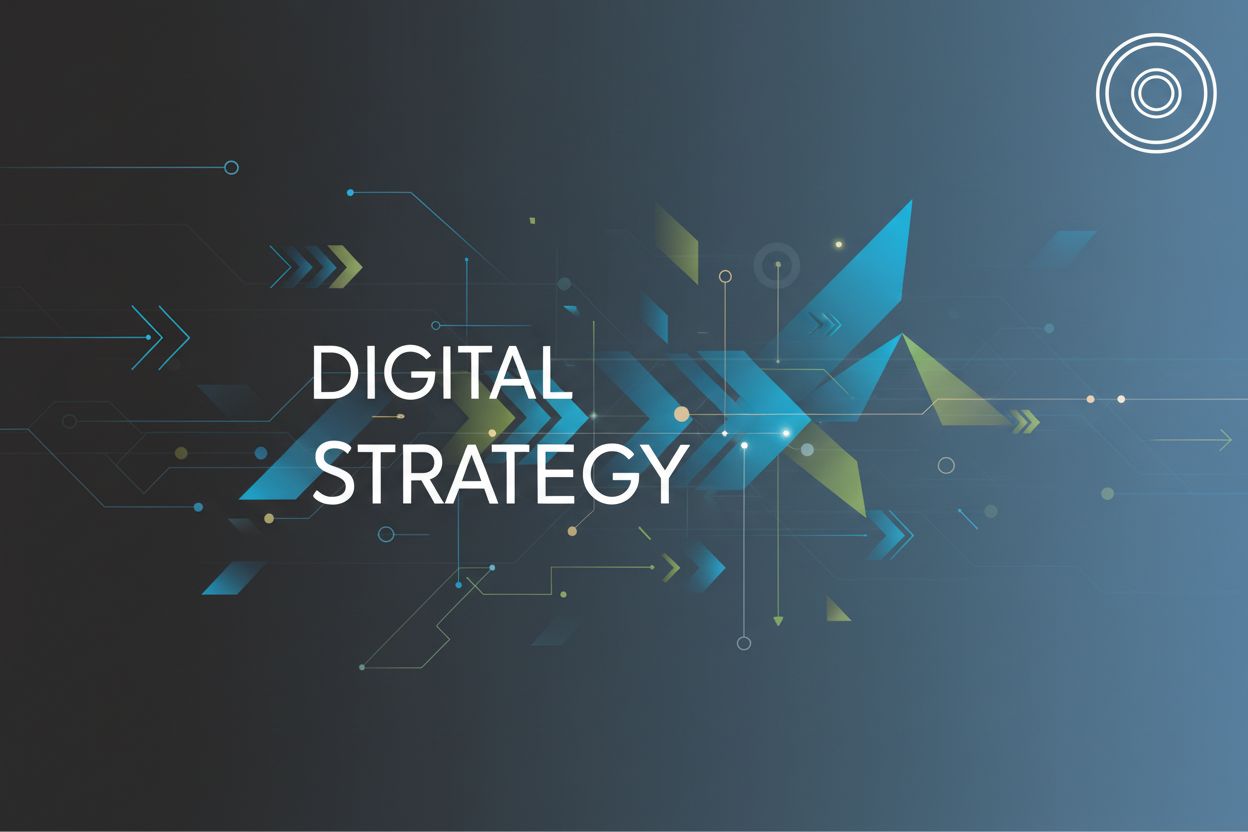Ultimate Guide to Various Marketing Frameworks
TL;DR
Introduction: Why Marketing Frameworks Matter
Marketing frameworks, eh? Why bother, you might ask? Well, think of it like this: ever tried assembling furniture without the instructions? Chaos, right? Marketing frameworks are kind of like those instructions—they bring order to the, often crazy, world of marketing.
These frameworks? They're not just some fancy academic thing. They are actually really useful. They're about giving you a structure, a way to think about your marketing efforts.
- Planning Powerhouse: Instead of just throwing ideas at a wall and hoping something sticks, frameworks force you to think strategically. For example, the SWOT analysis – helps businesses like, say, a local bakery, understand its strengths and weaknesses before launching a new product line. (Strengths, Weaknesses, Opportunities, Threats)
- Decision-Making Dynamo: Ever been stuck on a decision? Frameworks can help. Imagine a healthcare company trying to decide which digital channel to invest in. A framework like RACE (Reach, Act, Convert, Engage) can guide them to focus on channels that drive actual patient engagement, not just vanity metrics.
- Goal Alignment Guru: It's easy for marketing to feel disconnected from the overall business. Frameworks like OKRs (Objectives and Key Results) can help ensure your marketing goals directly support the company's bottom line. This means everyone's rowing in the same direction, which is, you know, pretty important.
And yeah, things are changing fast because of digital transformation. So, frameworks need to be agile. They've gotta help us integrate new tech and respond quickly to market shifts. It's not enough to have a plan; you need a plan that can adapt.
We'll be diving into how these frameworks are evolving to meet the challenges of the digital age.
Foundational Marketing Frameworks
Marketing frameworks, they’re not just for show, you know? Some of the most basic ones are still super relevant, even with all the new tech out there. Let's dive into a few of these foundational frameworks that can make a real difference to your strategy.
Okay, SWOT analysis. I know, it sounds kinda old-school, but trust me, it's a classic for a reason. It’s all about taking stock—what's your company good at? Where does it suck? What's out there that could help you, and what could totally ruin your day?
- Understanding internal and external factors: This is where you really dig deep. What are your internal strengths, like a killer sales team or maybe some really innovative tech? Then, what are your weaknesses? Maybe your customer service is, uh, lacking, or your supply chain is a mess. Opportunities are external – new markets, changing customer needs, maybe even a competitor screwing up big time. Threats? Competitors, economic downturns, new regulations, the usual suspects.
- Identifying competitive advantages: So, you've done your SWOT, now what? Look for the sweet spots where your strengths line up with opportunities. That's where your competitive advantage lives. For example, if you're an eco-friendly clothing brand, and there's a growing trend of sustainable living, boom! You've got a major advantage.
- Mitigating risks: Weaknesses and threats? Those are the things that keep you up at night. A SWOT analysis helps you see them coming so you can plan. Maybe you need to invest in better training for your customer service team, or diversify your supply chain so you're not screwed if one supplier goes belly up.
Ever wonder why some industries are super profitable, and others are a total bloodbath? Porter's Five Forces helps you figure that out. It looks at the power dynamics in your industry to see where you stand.
- Threat of new entrants: How easy is it for new players to come into your market? High barriers to entry (like huge startup costs or strict regulations) mean less competition.
- Bargaining power of suppliers: Do your suppliers have you over a barrel? If there are only a few suppliers for a critical component, they can charge you whatever they want.
- Bargaining power of buyers: Can your customers dictate prices? If there are tons of options out there, they can play you against your competitors.
- Threat of substitute products or services: What else could your customers use instead of your product? If there are lots of substitutes, you're in trouble.
- Rivalry among existing competitors: How cutthroat is the competition already in your industry? Are companies constantly slashing prices and fighting for market share?
The 4Ps? That's like, Marketing 101. But don't underestimate it! It's a simple framework for thinking about your entire marketing mix.
- Defining the marketing mix: Product, Price, Place, Promotion – these are your levers. What are you selling? How much are you charging? Where are you selling it? And how are you telling people about it? Get these right, and you're golden.
- Aligning the 4Ps with target audience: Who are you trying to reach, anyway? A luxury skincare brand isn't gonna sell its products at Walmart, right? They need to be in high-end stores, with a high price tag, and marketed with fancy ads. For example, a premium coffee brand might offer single-origin beans (Product) at a higher price point (Price), sell through boutique cafes and their own website (Place), and use sophisticated social media campaigns and influencer collaborations (Promotion) to reach affluent coffee enthusiasts.
- Adapting the 4Ps for digital channels: Things are different online. "Place" might mean your website or app. "Promotion" could be social media ads or influencer marketing. You gotta tweak the 4Ps for the digital world.
These foundational frameworks? They're not just relics of the past. They're the building blocks for more complex strategies. Next, we’ll explore some frameworks that help you understand your customers even better.
Digital Marketing Frameworks
Okay, so you're trying to figure out how to actually get customers, not just, you know, have a pretty website? Well, that’s where digital marketing frameworks come in! They can seriously help.
- RACE Framework: Reach, Act, Convert, Engage
Ever feel like your marketing is all over the place? The RACE framework might be your new best friend. It's all about breaking down the customer journey into manageable chunks: Reach, Act, Convert, and Engage. Simple, right?
- Planning a customer journey: First up, Reach. This is about getting your brand noticed. Think SEO, social media, content marketing – all that jazz. It's about building awareness before you even try to sell anything.
- Acquiring customers: Next, Act. This is where you get people interacting with your brand. Maybe they visit your website, download a ebook, or follow you on social media. The goal? Get them off the sidelines and into the game.
- Converting leads: Then comes Convert. This is where the magic happens – turning those interactions into actual sales. Think about optimizing your landing pages, streamlining your checkout process, and offering irresistible deals.
- Retaining customers: Last but not least, Engage. It's not just about getting a sale; it's about building a relationship. Email marketing, loyalty programs, and top-notch customer service are key here. This is where you turn customers into fans.
GetDigitize.com can help brands create comprehensive digital strategies using the RACE framework, ensuring a cohesive and effective approach to reach, engage, and convert customers. Visit GetDigitize.com to learn more about their digital marketing solutions.
AIDA – it's another classic, but still totally relevant. It stands for Awareness, Interest, Desire, and Action. Think of it as a step-by-step guide to persuading people to buy your stuff.
- Understanding the customer purchase funnel: First, you gotta make people Aware that you exist. Then, you gotta pique their Interest. After that, you need to create a Desire for your product or service. And finally, you gotta get them to take Action – buy, sign up, whatever.
- Creating compelling marketing messages: The AIDA model is super useful for crafting marketing messages that actually resonate. If you're trying to create awareness, focus on broad, attention-grabbing headlines. If you're trying to create desire, focus on the benefits and emotional appeal of your product.
- Guiding customers through the decision-making process: AIDA isn't just for ads; it can inform your entire marketing strategy. Think about how you're guiding customers through each stage of the funnel, from their first interaction with your brand to their final purchase.
- How aida can be applied to social media marketing: AIDA is really effective for social media marketing. For example, a catchy tweet raises awareness, a detailed post sparks interest, customer testimonials create desire, and a clear call-to-action drives action.
Okay, so STDC – See, Think, Do, Care – is all about tailoring your content to different stages of the customer journey. It's like AIDA, but with a bit more nuance.
- Reaching different customer segments: The "See" stage is for people who don't even know they have a problem yet. Your goal is to reach a broad audience with engaging, entertaining content. The "Think" stage is for people who are starting to research their options. Provide them with informative, educational content.
- Tailoring content for each stage: The "Do" stage is for people who are ready to buy. Focus on clear calls to action and persuasive sales copy. And the "Care" stage? That's for your existing customers. Keep them happy with exclusive content, loyalty programs, and awesome customer service.
- Building long-term relationships: STDC isn't just about getting sales; it's about building long-term relationships. By providing value at every stage of the customer journey, you can turn customers into loyal fans.
The Customer Value Journey is all about mapping out every single touchpoint a customer has with your brand. It's about understanding their experience from start to finish and optimizing it for maximum value.
- Mapping the customer experience: Start by identifying all the stages of the customer journey, from awareness to advocacy. Then, map out all the touchpoints – website visits, social media interactions, email communications, sales calls, etc.
- Identifying touchpoints: For each touchpoint, ask yourself: What is the customer thinking, feeling, and doing at this stage? What are their pain points? What are their goals?
- Optimizing interactions for value: Once you understand the customer experience, you can start optimizing it. Streamline the checkout process, improve your customer service, personalize your marketing messages – whatever it takes to make the journey smoother and more valuable.
These frameworks? They're not magic bullets, but they can give you a roadmap for navigating the crazy world of digital marketing. Next up, we'll be looking at some frameworks for optimizing your marketing spend.
Advanced Marketing Frameworks
Okay, so you've got the basics down, huh? Time to crank things up a notch. These advanced frameworks? They're not for the faint of heart, but they can seriously transform your marketing game.
Growth hacking – it's all the rage, and for good reason. It's about finding those sneaky, unconventional ways to explode your growth. Forget slow and steady; we're talking about rapid acceleration.
- Experimentation and iteration: Growth hacking is all about running tons of experiments, seeing what sticks, and ditching what doesn't. Think of it like throwing a bunch of stuff at the wall and seeing what clings on tight.
- Data-driven decision-making: Gut feelings? Nah. Growth hackers live and die by the data. They track everything, analyze everything, and use those insights to make smart decisions. No guessing games here.
- Focus on rapid growth: The name of the game is growth, growth, growth. Growth hackers are constantly looking for ways to scale quickly and efficiently. They're not afraid to try new things or break the mold.
Tired of battling it out in crowded markets? The Blue Ocean Strategy is all about creating your own uncontested market space – a "blue ocean" where you don't have to fight for every scrap. Sounds nice, right?
- Creating uncontested market space: Instead of competing head-to-head with rivals, you create something totally new and different. Think Cirque du Soleil – they didn't just try to be a better circus; they reinvented the whole concept.
- Making the competition irrelevant: When you're in a blue ocean, competition is almost an afterthought. You're not trying to beat anyone; you're playing a completely different game.
- Capturing new demand: Blue oceans aren't about fighting over existing customers; they're about creating new demand where none existed before. It's about tapping into unmet needs and desires.
The Lean Startup isn't just for startups; it's a mindset that can benefit any company. It's about building a Minimum Viable Product (MVP), getting it out there, and learning from your mistakes. Fail fast, fail often, right?
- Minimum Viable Product (MVP): Don't spend years perfecting your product behind closed doors. Get something basic out there ASAP and see how people react.
- Validated learning: It's not enough to just launch; you need to be constantly gathering feedback and learning from your customers. What are they loving? What are they hating? Use that info to improve.
- Iterative product development: The Lean Startup is all about making small, incremental changes based on what you've learned. It's a continuous cycle of building, measuring, and learning.
These advanced frameworks? They're not magic, but they can give you a serious competitive edge. Now, let's look into how to put all this together, so you can build a marketing strategy that actually works.
Selecting the Right Framework for Your Business
Alright, so you've absorbed all this framework knowledge... now what? Thing is, no single framework is a silver bullet for every business. It's like trying to use a hammer to screw in a lightbulb, right?
First things first, you gotta be real with yourself. What's your company actually struggling with?
- Identifying Key Challenges: Is it a lack of leads? Poor customer retention? Maybe your brand is just… invisible. A small, local bookstore, for instance, might struggle with competing against online retailers, while a SaaS company's biggest headache might be high churn rates.
- Defining Strategic Goals: What do you want to achieve? More sales? Greater market share? Better customer satisfaction? For a healthcare provider, the goal might be improving patient outcomes, while a fintech startup might be focused on acquiring users quickly.
- Understanding Your Target Audience: Who are you trying to reach, anyway? What do they want? For example, a luxury skincare brand will target a different demographic than a budget-friendly cosmetics line.
Okay, you know what you need – now, does the framework fit?
- Considering Your Industry: Some frameworks just work better in certain sectors. A manufacturer might find lean principles super useful for optimizing production, while a creative agency might lean towards design thinking methodologies.
- Analyzing Your Resources: Do you have the budget, the team, and the time to implement a complex framework? A small startup might not have the bandwidth for a full-blown six sigma implementation, while a large enterprise might struggle with the agility required for growth hacking.
- Assessing Your Team's Capabilities: Does your team have the skills and knowledge to use the framework effectively? A marketing team unfamiliar with data analysis might struggle with a framework that relies heavily on a/b testing and analytics.
Framework in place? Great. Now, prove it's working.
- Setting Clear Objectives: What does success look like? How will you know if the framework is actually making a difference? A retail chain might set a goal of increasing online sales by 20% within six months, while a non-profit organization might aim to increase donor engagement by 15% in a year.
- Tracking Key Performance Indicators (KPIs): What metrics will you use to measure progress? Website traffic, conversion rates, customer satisfaction scores, return on investment (ROI)—the usual suspects.
- Adapting Your Strategy Based on Results: Is the framework delivering the results you expected? If not, don't be afraid to tweak it, ditch it, or try something else. Marketing is all about testing, learning, and adapting.
So, yeah, picking the right framework isn't a walk in the park. But with a little self-awareness and a willingness to experiment, you can find a framework that actually works for your business, and not just some textbook example.




